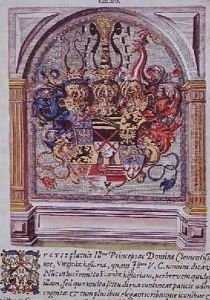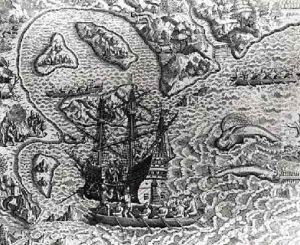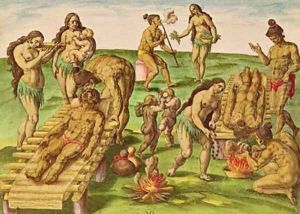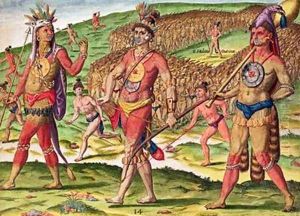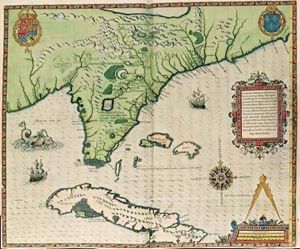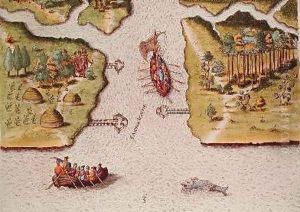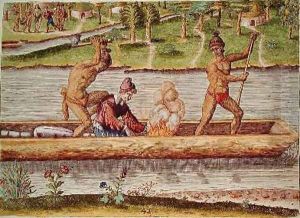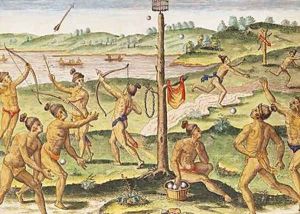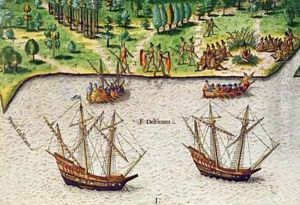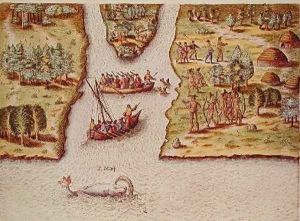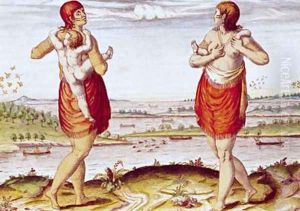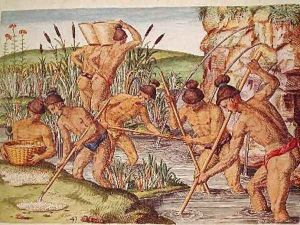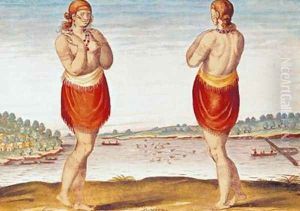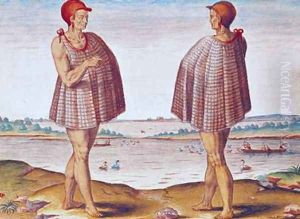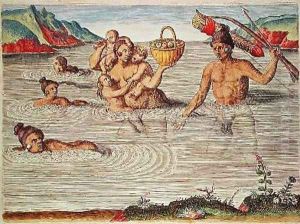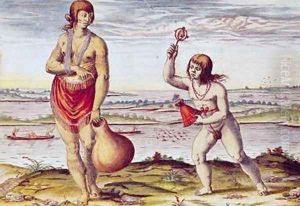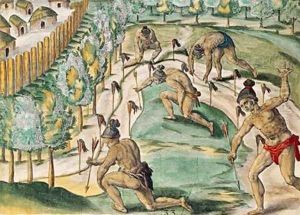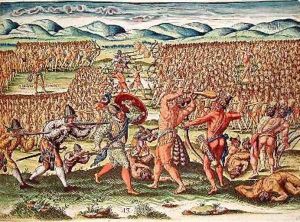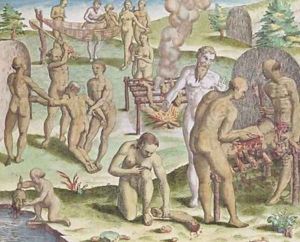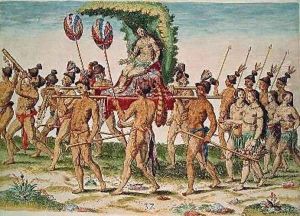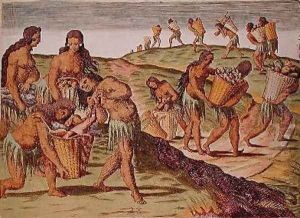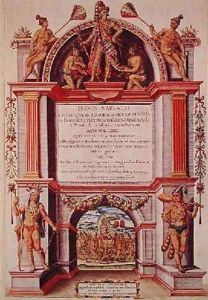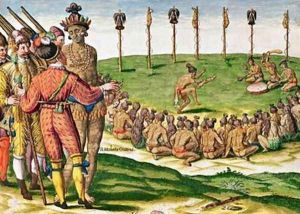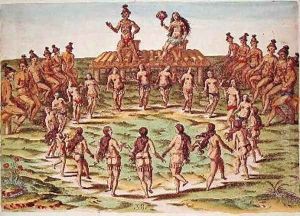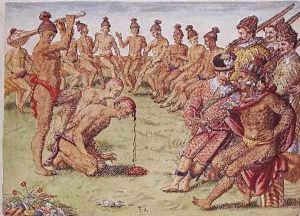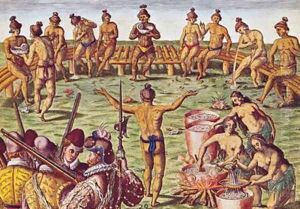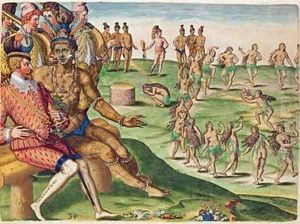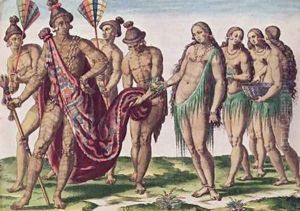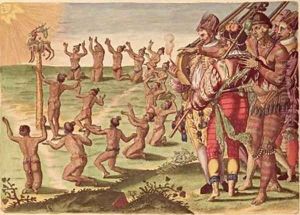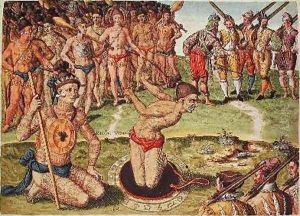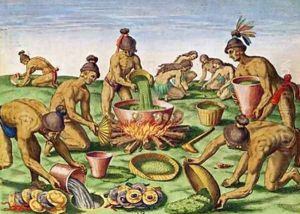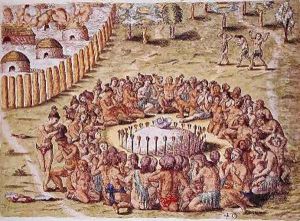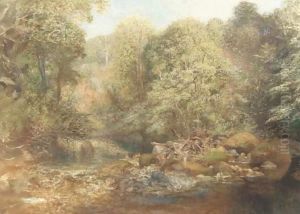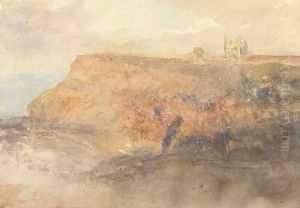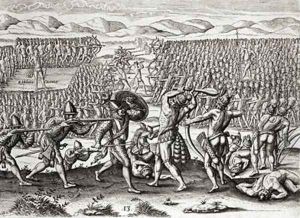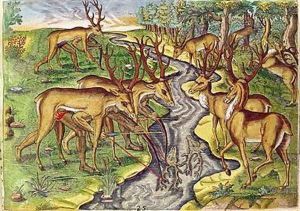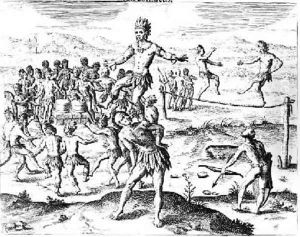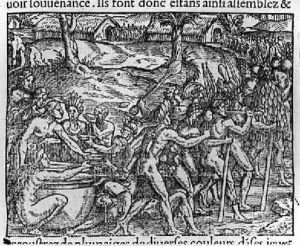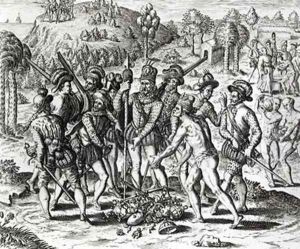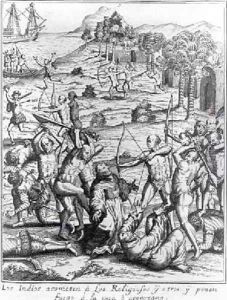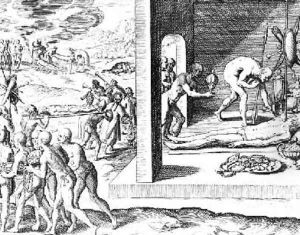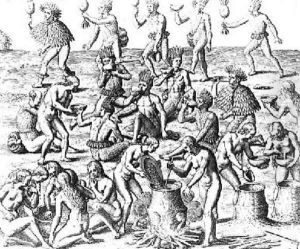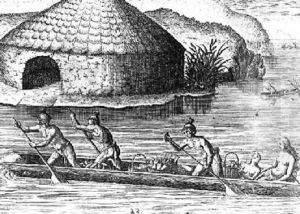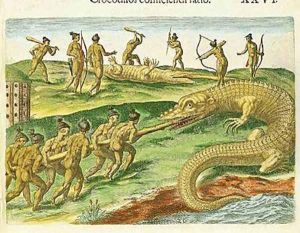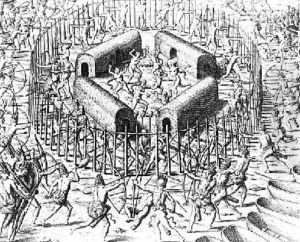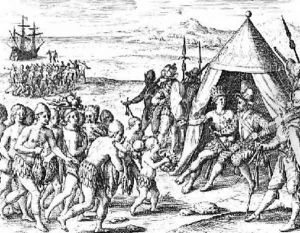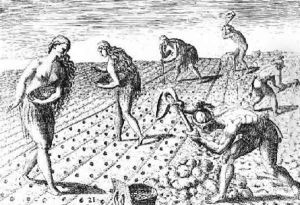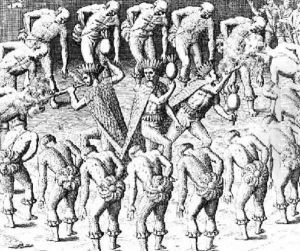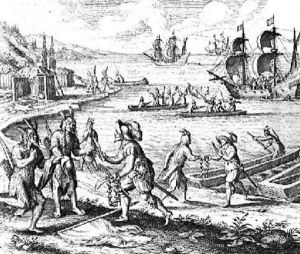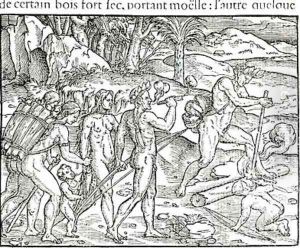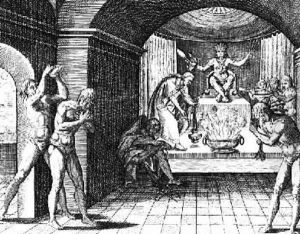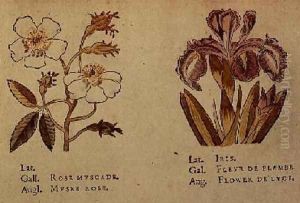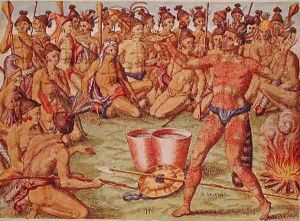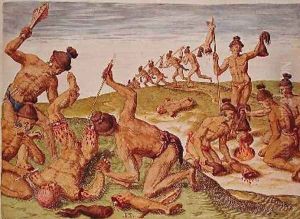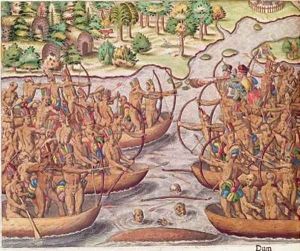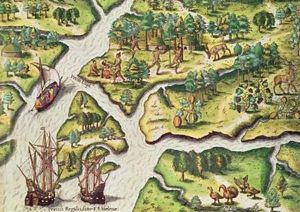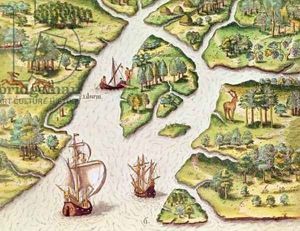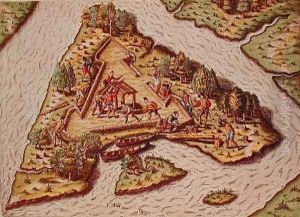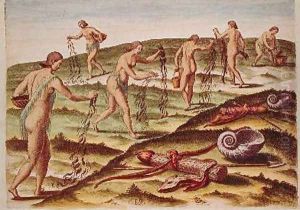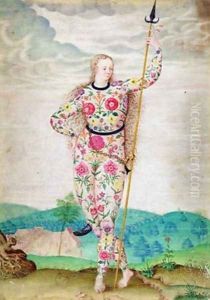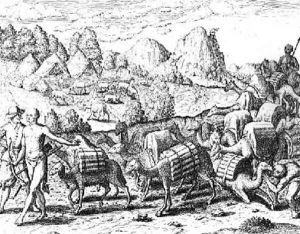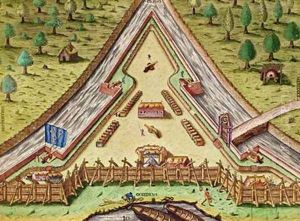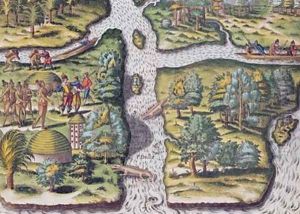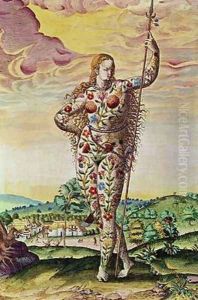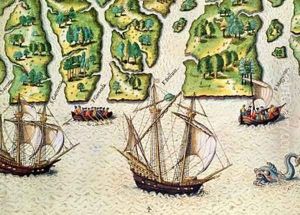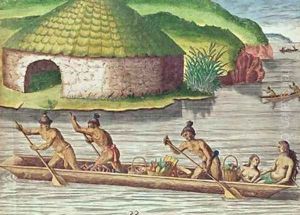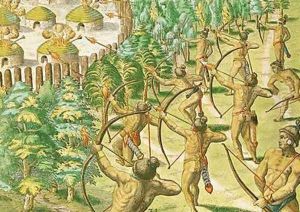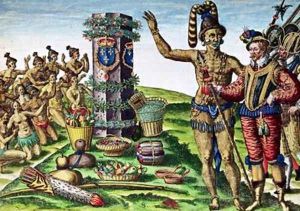Jacques le Moyne de Morgues Paintings
Jacques le Moyne de Morgues was a French artist and member of the short-lived French colony at Fort Caroline in present-day Jacksonville, Florida. He was born around 1533 in Dieppe, France, a town with a tradition of cartography and exploration. His early life is somewhat obscure, but it is known that he developed skills as a cartographer and an illustrator.
Le Moyne is most renowned for his work as an artist on the Huguenot expedition to the New World under the command of Jean Ribault and René Goulaine de Laudonnière between 1562 and 1565. This expedition aimed to establish a safe haven for Huguenots and expand French claims in the Americas. During his time in Florida, Le Moyne was responsible for documenting the landscapes, flora, fauna, and the indigenous Timucua people. His illustrations are some of the earliest known European depictions of North America and provide a valuable historical record of the period.
However, the colony faced immediate difficulties, including hostility from the native population and a lack of supplies. The situation worsened when the Spanish, who also had territorial ambitions in Florida, attacked and destroyed Fort Caroline in 1565. Le Moyne escaped the massacre and returned to Europe, where he would eventually settle in London, England.
After his return, Le Moyne worked with the publisher Theodor de Bry to create engravings based on his drawings of the New World for de Bry's 'Brevis Narratio,' a part of the 'Grands Voyages,' a series of travel narratives. These engravings were widely disseminated and had a significant impact on European perceptions of the New World and its inhabitants. It's important to note that some of Le Moyne's work may have been embellished or altered to appeal to European audiences, and thus they may not be entirely accurate representations of what he witnessed.
Despite the notoriety of his work related to the New World, Le Moyne also made substantial contributions to botanical illustration. After his move to London, he created a series of watercolors depicting plants, which are now held in the British Museum. These works are considered some of the earliest and most accurate depictions of North American flora.
Jacques le Moyne de Morgues died in London in 1588. His legacy lives on through his contributions to early American ethnography and botany. His work provides a unique glimpse into the world of the 16th-century French colonial endeavors in North America and remains a valuable resource for historians and art scholars alike.
